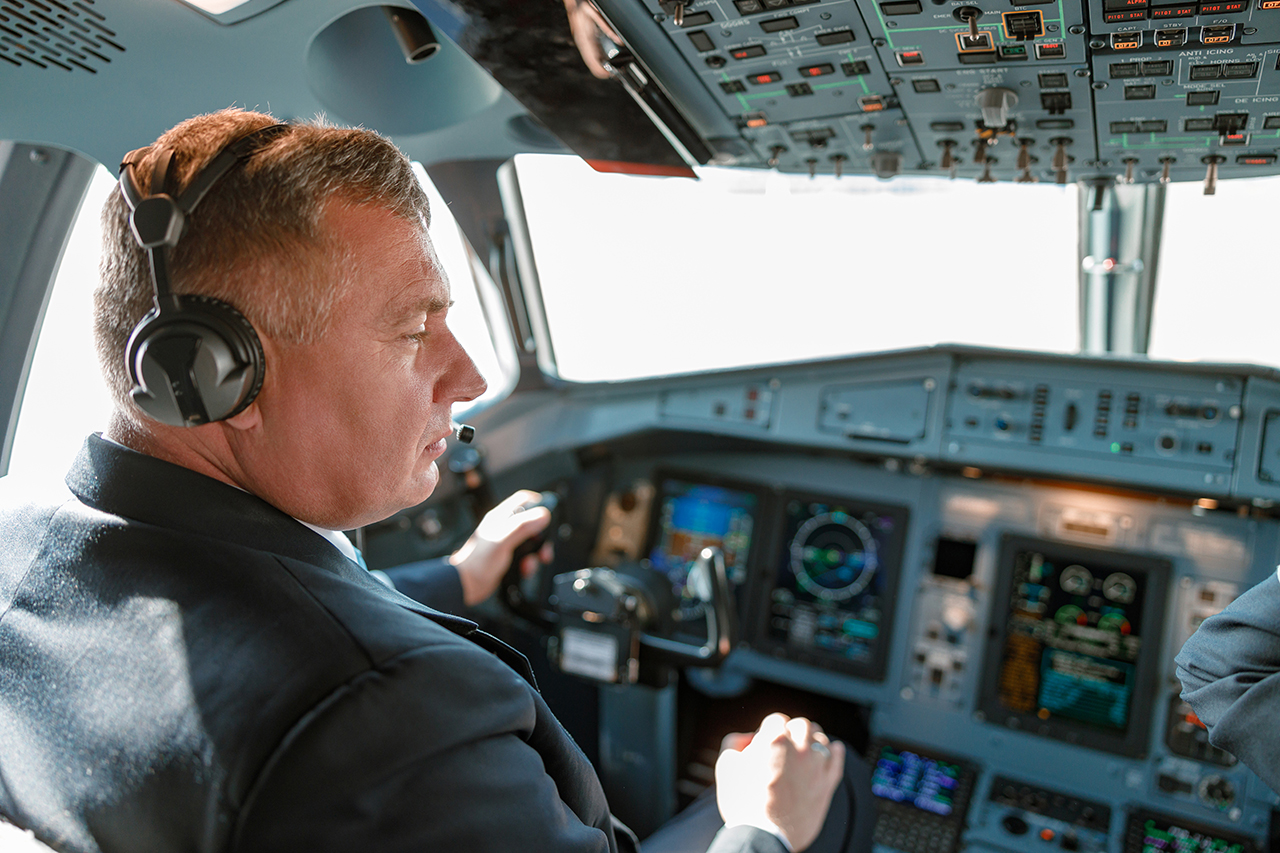United Airlines Pilot Pay Scale: Understanding Earnings and Benefits in 2025
Feb 27, 2025
Curious about the United Airlines pilot pay scale? As of 2025, United Airlines pilots earn an average annual salary of $248,118, though this figure varies based on experience, seniority, and aircraft type.
This article will break down the pay structure, including starting salaries for First Officers, earnings for Captains, and other factors that influence pilot compensation at United Airlines.
United Airlines Pilot Salary Overview
Being a United Airlines pilot is exciting and pays well. By 2025, United Airlines pilots will make an average annual salary of $248,118.
But that’s not set in stone. It depends on how many hours they have flown, their rank in the company and the type of plane they fly.
A united pilot benefits from competitive compensation and benefits packages, which include higher pay for those with more hours and longer tenures at United. The salary scale for these airline pilots is based on hands-on experience, it’s acknowledgment that the company is committed to safety and competence in their workforce.
First Officer United Airlines Salary
Becoming a First Officer at United Airlines comes with a great salary. Newbies in this role can make around $9,600 a month which is $108,480 to $304,980 a year.
This is a solid foundation for future growth. As First Officers gain more flight hours at United Airlines, their hourly pay increases significantly as their skills and expertise grows.
By the second year they could see their hourly pay go up to around $177. That’s recognition of their growth and value to the airline.
With 73 hours flown a month on average during this period, they could make around $115,621 a year.
For comparison, how much do Allegiant pilots make? Allegiant pilots generally earn between $50,000 to $75,000 annually, reflecting the pay scale of a low-cost carrier.

United Airlines Captain Pay Scale
Becoming a Captain at United Airlines comes with a big pay boost. By their 12th year, an experienced Captain can make around $342,997 per year or $28,583 per month.
The plane you fly determines your pay rates. Those flying the 777 can make up to $438 per hour.
Monthly Earnings for United Airlines Pilots
United Airlines pilots monthly pay is based on several factors. Captains at United can make between $27,000 and $35,040 per month. That’s because of experience and the plane they fly.
So a Captain who flies 80 hours a month can make up to $420,000 per year. Over the course of their career, airline pilots typically make around $10 million.
Some pilots can make up to $13 million in their career if they take advantage of preferred routes and schedules that are more open to senior pilots.
Factors Influencing United Airlines Pilot Pay
United Airlines pilot pay is based on several factors. Time with the company plays a big role as veteran pilots with more experience make more. The plane you fly also determines your pay scale. Those flying bigger and more complex planes make more.
Job security and income for airline pilots is supported by union representation and a seniority system.
The union representing United pilots, the Air Line Pilots Association (ALPA), negotiates wages and provides a fair and predictable way to determine pay through the United Pilot Agreement, which outlines the benefits package and competitive compensation to attract and retain skilled pilots.
Benefits Package for United Airlines Pilots
United Airlines gives its pilots a bunch of perks on top of their great pay. This includes health coverage for medical, dental, vision and life insurance for pilots and their dependents.
The company offers paid time off and reduced rate travel for its flight crew to explore and travel the world.
For their future financial security United’s benefits package also includes a 401(k)-retirement plan with employer contributions to make post career life more secure. It’s not just long-term planning.
Pilots get better terms in sick pay, extended holidays and extra pay when duties fall on holidays or require overnight stays away from home.
How to Become a United Airlines Pilot

To become a pilot at United Airlines you must meet certain educational and certification requirements. You must have an active FAA first class medical. Obtaining a commercial pilot license involves meeting specific eligibility criteria, completing required training, and understanding the career pathways available.
Applicants with a bachelor’s degree are preferred but high school diploma is the minimum. Aspiring pilots often start by earning their private pilot license, which serves as a foundational step in their training journey.
You must have an unrestricted FAA airline transport pilot ATP certificate with an airplane multiengine class rating. You must have at least 1,500 hours of flight time as an airline pilot.
Flight schools play a big role in the pilot training process, providing structured training through partnerships with airlines. Application process requires verification of these requirements and background checks and possibly tests.
Once hired new recruits will go through training specific to flying and procedural knowledge of United Airlines’ fleet operations. Various pilot training programs offer structured training options that guides students from novice to getting their pilot licenses.
This training ensures all new pilots are ready for their responsibilities as part of United Airlines’ professional pilots.
Application and Interview Process
The path to becoming a United Airlines pilot is a multi-step process to ensure only the best of the best join the team. Here’s a breakdown:
-
Application: Start by applying through the United Airlines careers website. This will ask for your contact info, resume and a cover letter explaining your qualifications and why you want to be a United Airlines pilot.
-
Online Assessment: If you make the cut, you’ll be invited to an online assessment. This evaluates your cognitive abilities, personality and behavioral tendencies to see if you’re a good fit for the role.
-
Phone or Video Interview: Successful candidates from the online assessment will be interviewed by a United Airlines recruitment team member over the phone or video. This interview is all about your communication skills, experience and motivation to be a United Airlines pilot.
-
In-Person Interview: If you make it past the first interview, you’ll be invited to an in-person interview at a United Airlines facility. This will test your technical knowledge, experience and cultural fit within the airline.
-
Assessment Day: Candidates who progress will do an assessment day which includes a simulator assessment, technical interview and personality assessment.
-
Medical Evaluation: Passing the assessment day leads to a medical evaluation to see if you meet the health requirements for a commercial pilot’s license.
-
Background Check: A background check follows to verify your credentials and make sure you meet the security standards for a commercial pilot’s license.
-
Job Offer: If you get through all that, you’ll get a job offer to become a United Airlines pilot.
This whole process ensures United Airlines pilots are the best in the industry, ready to uphold the airline’s high standards of safety and service.
Training Programs and Career Pathways
United Aviate by United Airlines has multiple paths for individuals who want to become pilots including college students, flight school graduates and licensed flight instructors. This ensures a constant flow of well-trained aviators through its various flight training programs.
The Military Pilot Program at United is for serving military aviators who want to transition to civilian aviation with a career at United Airlines.
Professional growth is encouraged through programs like the United Leadership Institute which develops leadership skills and moves careers at United Airlines to potentially become a United Airlines pilot.
United Airlines Pilot Bases and Fleet

United Airlines has ten main pilot bases across the United States with major locations like San Francisco, Los Angeles and Chicago as hubs.
The placement of these bases is designed to improve flight operations efficiency and pilot access. With an fleet of over 850 aircraft including wide-body jets like the Boeing 777 and 787 series.
United Airlines has ordered 150 Boeing 737-MAX10 aircraft to be added to its fleet starting 2025.
Comparison with Other Major Airlines
Comparing United Airlines pilot salaries with those of other major airlines shows United remains competitive. First-year officers at United earn about $93 per flight hour, while American Airlines offers $90 per flight hour.
So, how much does Delta pilot make? Delta Airlines offers a slightly higher starting pay for first officers, ranging from $92 to $108 per flight hour.
For captains, United Airlines offers hourly rates between $330 and $354, closely aligning with American Airlines’ pay structure. Delta captains can earn up to $400,000 annually, positioning them competitively in the market, especially for international routes.
Union Representation and Agreements

Recently, United Airlines pilots, represented by the Air Line Pilots Association (ALPA), endorsed a new contract that delivers a substantial 40 percent hike in their pay.
This considerable enhancement to their earnings reflects the effective representation of these aviators by a robust union. Indeed, an impressive 82 percent of voting pilots were in favor of this agreement.
Future Outlook for United Airlines Pilots
United Airlines pilots are poised for a bright future, as forecasts suggest their salaries could rise by 20-40% in the next five years, owing to an increase in air travel demand and an existing pilot deficit. This economic trend is anticipated to be the catalyst for such significant wage growth.
As United Airlines embarks on swift expansion of its fleet and presents robust career advancement prospects, it becomes an attractive choice for those pursuing a piloting career.
The recently established pilot contract, with its worth exceeding $10 billion, provides enduring stability through September 30, 2027 while also presenting competitive benefits within the industry.
Frequently Asked Questions
How much do United Airlines pilots make per month?
Pilots working for United Airlines usually receive a monthly salary ranging from $27,000 to $35,040. This compensation varies based on their level of experience and the specific aircraft models they operate.
What is the salary range for United Airlines First Officers?
United Airlines First Officers. Have annual earnings ranging from $108,480 to $304,980. Their starting monthly salaries are approximately $9,600.
What benefits do United Airlines pilots receive?
United Airlines pilots enjoy a robust benefits package, which includes medical, dental, and vision insurance, paid time off, travel privileges, and a 401(k) plan with employer matching contributions.
These benefits collectively support their health, financial well-being, and work-life balance.
How does the new union agreement impact United Airlines pilot salaries?
The new union agreement results in a substantial 40 percent pay increase for United Airlines pilots, enhancing their salaries and improving working conditions.
This marks a significant advancement for the pilots’ financial and professional well-being.
What are the requirements to become a United Airlines pilot?
To become a United Airlines pilot, you need a current FAA first-class medical certificate, an unrestricted FAA Airline Transport Pilot certificate with a multiengine rating, and at least 1,500 hours of total flight time.
Meeting these qualifications is essential for a successful application.
